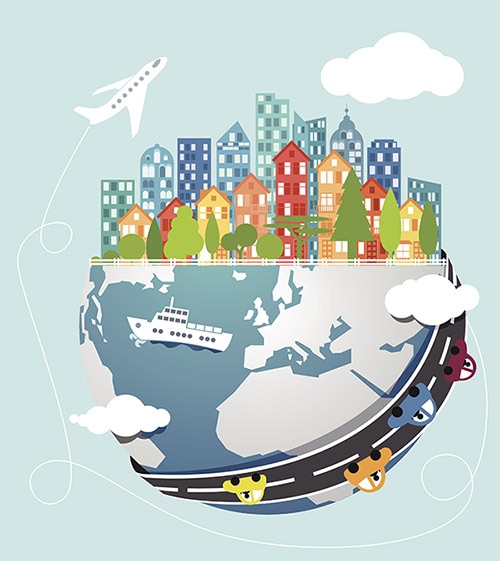Who We Are
Protecting the health of communities in a globally mobile world
For over 75 years, the Centers for Disease Control and Prevention (CDC) has focused on controlling, containing, and eliminating diseases that know no borders. Today, globalization makes it easier to move people and goods across the world in a short time. CDC’s Division of Global Migration Health (DGMH) focuses on activities that lessen the public health risks of rapid global travel because diseases and outbreaks can quickly cross international borders.

DGMH meets the challenges of maintaining public health security by preventing the introduction, transmission, and spread of infectious diseases into the United States in a globally mobile world by:
Protecting public health at US ports of entry by rapidly responding to sick travelers who arrive in the United States, alerting travelers about disease outbreaks, and restricting the importation of animals and products that may carry disease.
Keeping Americans healthy during travel and while living abroad by reducing illness and injury among US residents traveling internationally or living abroad through alerts, recommendations, education, and support – based on the best science – to travelers and healthcare providers.
Ensuring the health of individuals coming to live and work in the United States by overseeing the mandatory health screenings for all immigrants and refugees entering the United States, as well as overseas vaccination and parasite treatment programs.
Partnering to protect the health of US communities along the US-Mexico border by working with state, local, and Mexican public health institutions to detect, notify, investigate, and respond to reports of illness and infectious disease among residents and travelers in US communities along the US-Mexico border.
1 U.S. Customs and Border Protection. Enterprise and Reporting Data Systems. U.S. Department of Transportation, Bureau of Transportation Statistics, Border Crossing Entry Data, Border Crossing Entry Data | Open Data | Socrata (bts.gov), U.S. Department of Transportation, Bureau of Transportation Statistics, Air Passenger, T-100 database for 2019, Data Elements (bts.gov)
2 U.S. Department of Transportation, Bureau of Transportation Statistics T-100 Segment data for 2019.
3 U.S. Customs and Border Protection. Enterprise and Reporting Data Systems. U.S. Department of Transportation, Bureau of Transportation Statistics, Border Crossing Entry Data, Border Crossing Entry Data | Open Data | Socrata (bts.gov), U.S. Department of Transportation, Bureau of Transportation Statistics, Air Passenger, T-100 database for 2019, Data Elements (bts.gov)